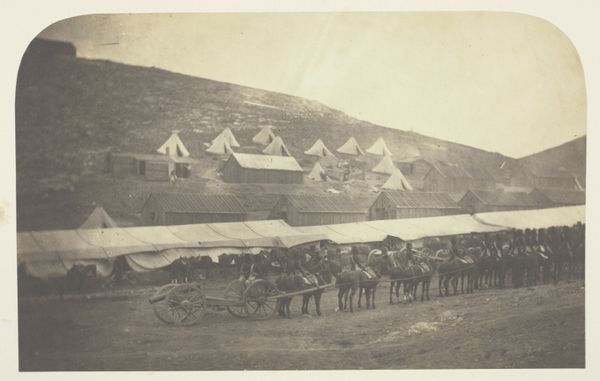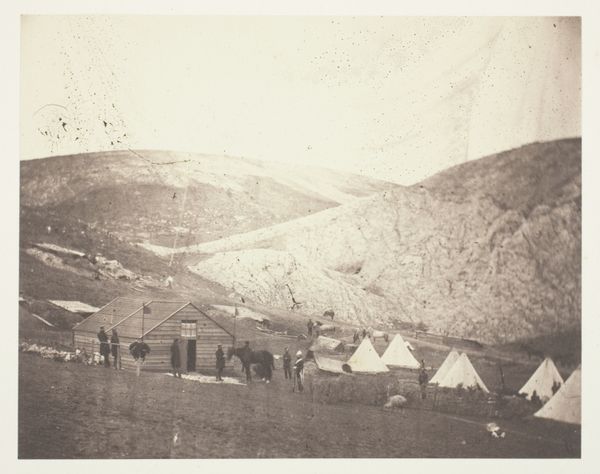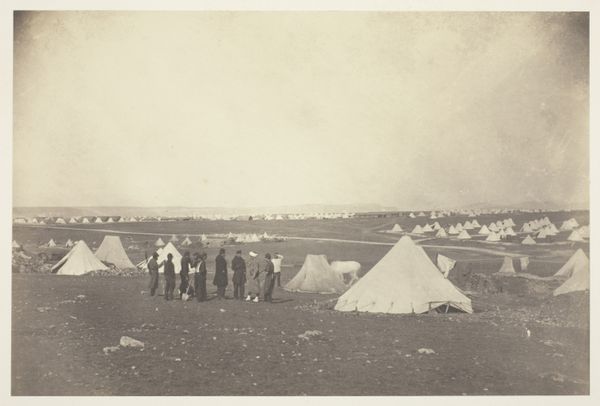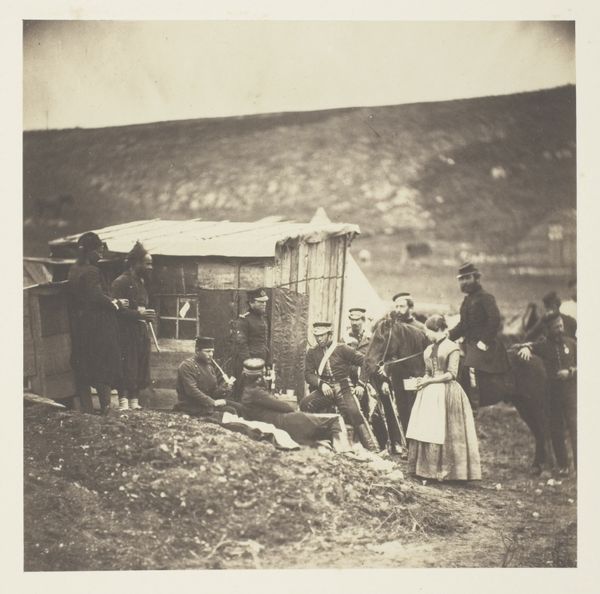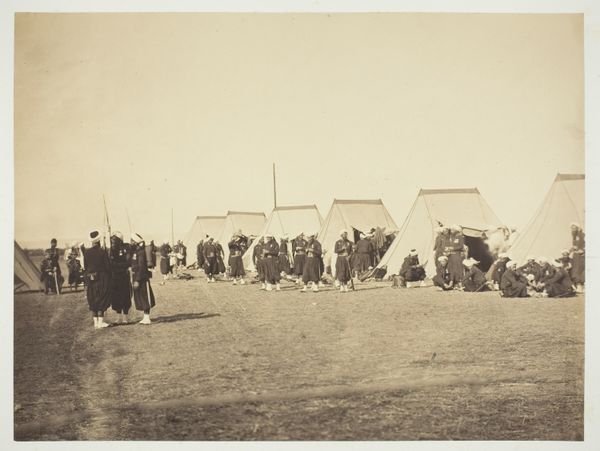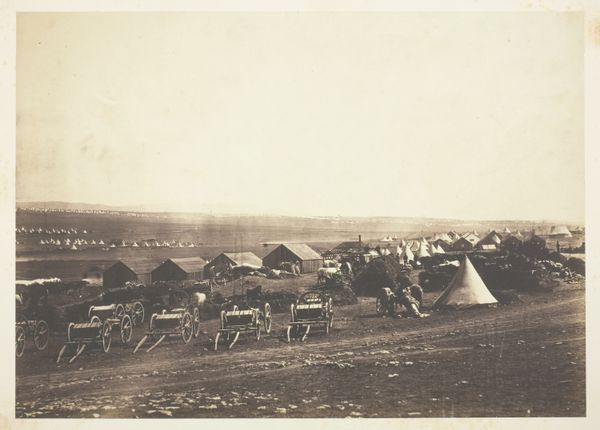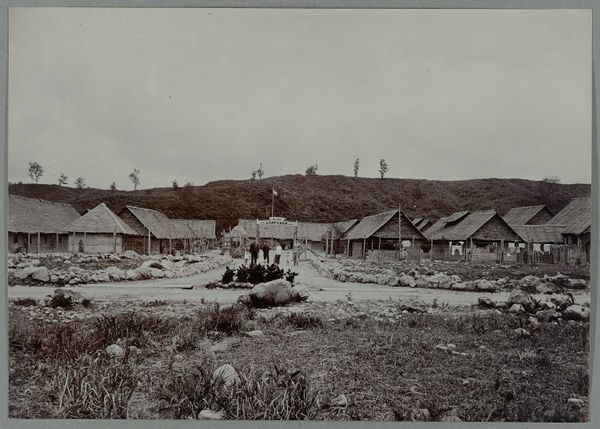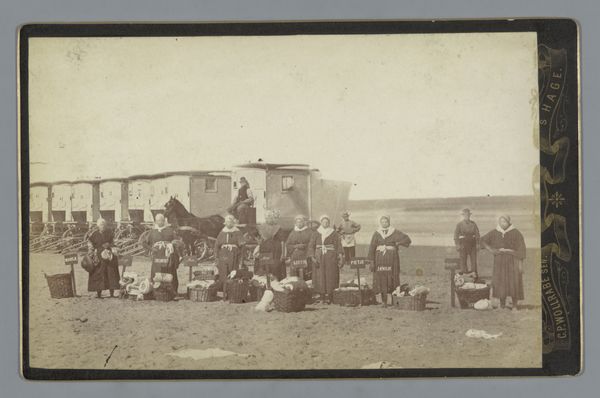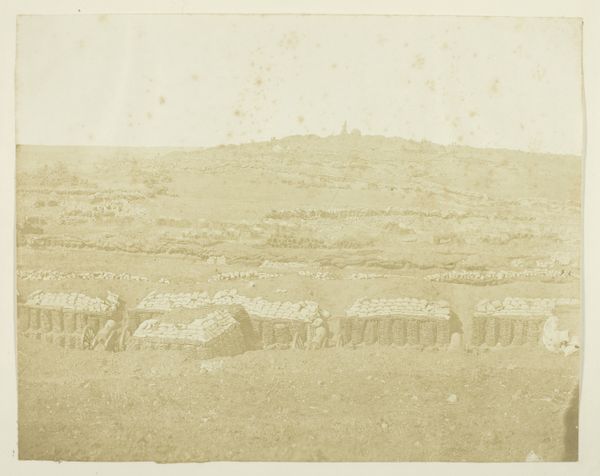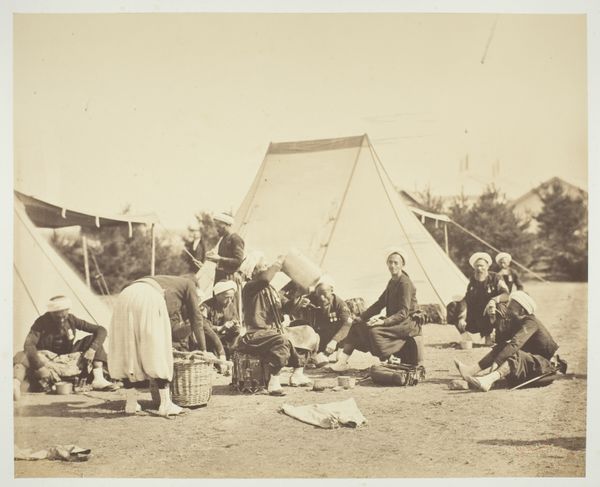
Dimensions: 14.4 × 20 cm (image/paper); 42.5 × 58.9 cm (mount)
Copyright: Public Domain
Curator: Roger Fenton’s photographic print from 1855, currently housed here at the Art Institute, draws us into a scene of both calm and potential chaos. Looking at this, what grabs you first? Editor: Immediately, there’s a stillness. Despite the implied location of wartime—suggested, perhaps, by the tents and the gathering of military figures—an oddly pervasive serenity hangs over the composition, doesn't it? The figures, posed as if waiting, caught between duties perhaps. Curator: Fenton was sent to photograph the Crimean War. Instead of gruesome battle scenes, he offered glimpses into the daily life of soldiers. The photograph is an albumen print on paper, which lends this image a faded, dreamlike quality. What strikes me is that this historical moment has an artistic resonance due to Fenton’s mastery of the composition. Editor: Precisely, look at the structuring role that tonal gradation plays. Fenton masterfully utilizes the stark contrast between light and shadow. The figures are placed against a bright yet undefined landscape, the backdrop becoming almost irrelevant. Focus is placed primarily on form. The semiotician in me wants to jump in here because I find a play between representation and the real in that it is there for those willing to investigate more closely. Curator: Yes, I get it! Fenton seemed to explore that strange space. What I also love is this casual staging versus his desire to capture the historical truth, which reminds me of my time... Never mind. There’s almost an intimacy in observing the soldiers seemingly suspended in time. Do you agree that adds to the picture's complexity? Editor: The "truth," however elusive, seems layered into its visual arrangement. What ultimately compels, and what perhaps the modern viewer may sometimes overlook, is the piece’s materiality as it interacts with light; it is an object reflecting not just an image but a past process. Curator: That makes me think again how art isn’t simply something visually consumed but felt. It’s like art always calls for you to just feel, right? I find this perspective so helpful because, for me, it highlights both art's vulnerability and power to hold onto its history.
Comments
No comments
Be the first to comment and join the conversation on the ultimate creative platform.
